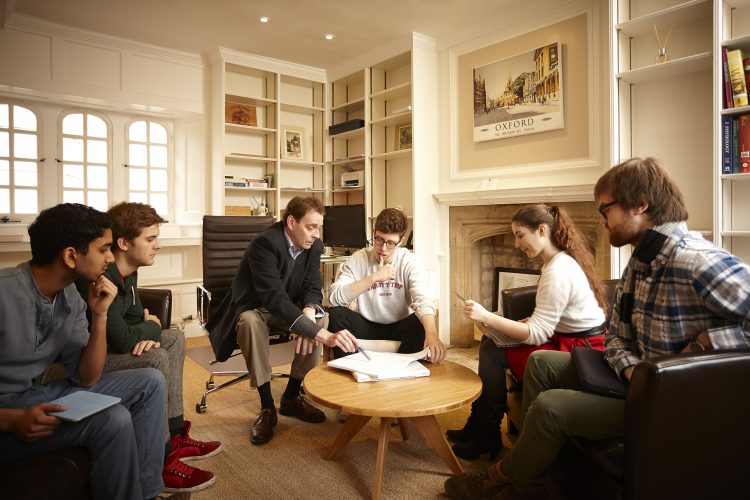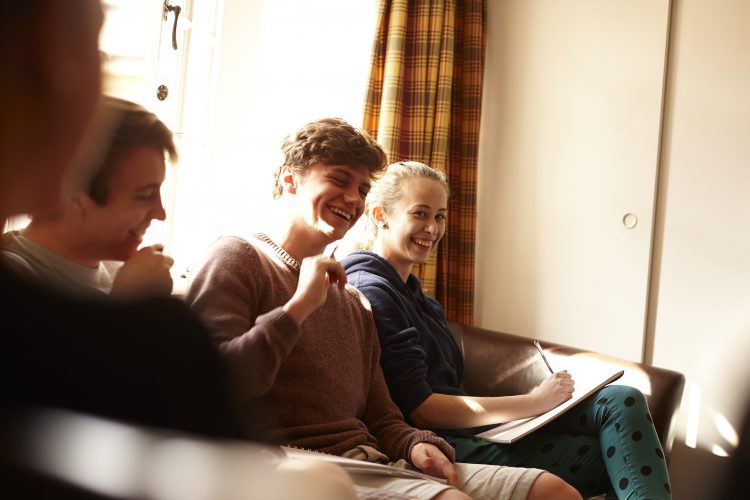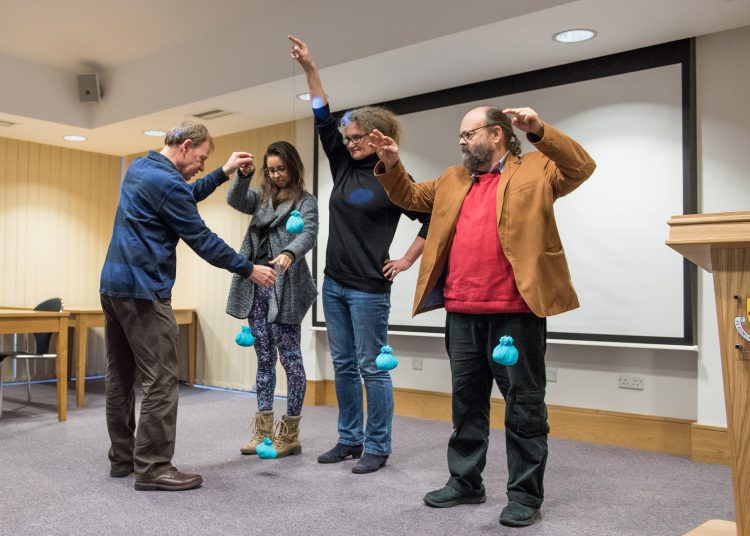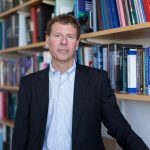Professor Paul Matthews
Professor of Neurology and Fellow by Special Election
Paul Matthews is the Edmond and Lily Safra Professor of Translational Neuroscience and Therapeutics, Head-designate of the new Department of Brain Sciences and Head of the UK Dementia Research Institute at Imperial College London.
Professor Matthews’ research interests address the neuropathology and treatment of multiple sclerosis, the role of neuroinflammatory mechanisms in neurodegeneration and in the application of ‘Big Data’ approaches for personalised medicine. His work employs a wide range of ‘omics, epidemiological and imaging methods to address particularly the functional anatomical evolution of innate immune changes in the aging brain in neurodegenerative diseases. Recent studies have focused on ways that these approaches could be used to better inform individualised estimates of disease risk and personalised medicine for multiple sclerosis and the dementias.
Paul originally came from America. He attended Carbondale Community High School in Carbondale, Illinois and then spent a year at Washington University in St. Louis, Missouri as a Langsdorf Fellow, during which time he applied and was offered a place to read Chemistry at St Edmund Hall (1974-78). He explored novel biophysical methods of in vivo magnetic resonance spectroscopy (which is closely related to the now clinically ubiquitous MRI scanner) in studies of cardiac energy metabolism during his DPhil in Prof. Sir George Radda’s laboratory in the Department of Biochemistry (1978-1981)
Following his DPhil, he was awarded a Foulkes Fellowship to allow him to read Medicine at the Hall (1982), where Anne Taylor had recently become the Medical Tutor. However, even before his first year ended, he was offered an opportunity to combine continued medical training with a postdoctoral position in the Department of Pharmacology at Stanford University. He combined further research with a somewhat accelerated programme for award of an MD three years later (1986) and then completed his internship in internal medicine, also at Stanford. In 1987, he joined the Residency Programme in Neurology at the Montreal Neurological Institute of McGill University, where he became Senior Resident in 1989.
He completed his residency and wrote his Canadian Neurology Fellowship examination and the American Board Examination for Neurology and Psychiatry in 1990, when he also completed his first book, Diagnostic Tests in Neurology (1991) with Douglas Arnold. He then returned to Oxford with an MRC (Canada) Clinical Scientist Award, which allowed him to spend the next three years as a research fellow in the Genetics Laboratory before starting as an Assistant Professor of Neurology and Human Genetics at McGill (1993). His work over this period led to co-authorship of a specialist monograph with Oxford colleagues, Metabolic Myopathies (1995).
Paul was attracted back to Oxford (1995) by John Newsum-Davis, who was then the Action Research Professor of Neurology and also a Fellow of St Edmund Hall. With his return to Oxford, Paul was awarded an MRC Clinical Research Readership and named as the first Director of the newly formed Oxford Centre for Functional Magnetic Resource (FMRIB, now the Wellcome Trust Centre for Integrative Imaging, directed by Hall Fellow, Heidi Johansen-Berg), with promotion to a personal chair in Oxford in 1998. With FMRIB colleagues Peter Jezzard and Steve Smith, he published one of the first textbooks in this new scientific area, Functional Magnetic Resonance Imaging: Methods for Neuroscience (2001). He spent 10 years working to develop the FMRIB Centre, as well as a research programme that addressed mechanisms of brain plasticity that preserve functions after brain injury or with neurodegeneration. In an effort to better communicate the excitement around the then new science of functional brain imaging being conducted at FMRIB, he (with Jeff McQuain) published a book for the lay public, The Bard on the Brain: Understanding the Mind Through the Art of Shakespeare and the Science of Brain Imaging (2003) (2004 IPPY Award Winner for Best Books of the Year).
In late 2005, he was offered an opportunity to move to the pharmaceutical company, GlaxoSmithKline, as a Vice President in Pharmaceutical and founding Director of the GSK Clinical Imaging Centre (CIC). In 2008, he was awarded an OBE for service to neuroscience. With Suzanne Nalbantian and James McClelland, he edited a volume of essays integrating perspectives from the humanties and from neuroscience, The Memory Process (2010). He continued in GSK in number of senior roles after supporting the “spinout” of the CIC (now inVICRO, LLC) until 2014.
Before leaving GSK, he took on a part-time role as Head of the newly formed Division of Brain Sciences in the Department of Medicine (2012), a role he has been in since. He was elected to the Academy of Medical Sciences (2014) and the Academia Europea (2016) and was named as an NIHR Senior Investigator in 2014. In April 2017, he established a UK DRI Centre at Imperial College that is committed to the discovery of mechanisms by which environment or lifestyle influence risks of Alzheimer’s disease and was named an Associate Director of the UK Dementia Research Institute. His laboratory within the UK DRI Centre focuses specifically on study of the brain’s innate immune system as a mediator of these body-brain interactions. He has authored more than 400 peer reviewed papers and other academic publications. In May 2019, a new book, co-edited with Suzanne Nalbantian, entitled Secrets of Creativity: What Neuroscience, the Arts, and Our Minds Reveal, will be published by Oxford University Press.
In conjunction with his role at Imperial, Paul has been a Fellow by Special Election at St. Edmund Hall since 1997. He holds a Visiting Professorship in Oxford, at the University of Edinburgh and at the Nanyang Institute of Technology and is an Adjunct Professor at McGill University. He has a number of external public and private roles externally. Amongst these, he is on the Medical Advisory Board of the MS Society of Canada, the RIKEN Centre for Biosystems Dynamics Advisory Council (Japan) and the Spinoza Prize Committee (Holland). Since 2009, he has been on the Steering Committee of UK Biobank and chairs the Imaging Enhancement Working Group, which has supported UK Biobank for creating the world’s largest imaging epidemiological dataset. He also is on the Scientific Advisory Board to the Board of Directors of Ipsen Pharmaceuticals and regularly acts an external consultant for pharma and academic centres.
I came to the Hall from middle America, almost directly out of school. The world seemed much larger then, so it was a much bigger move than it seems now. In fact, as a letter from the College went astray, I came both alone and unannounced, just before 0th week. I was uncertain when term was to begin! Picking up the phone to ring the College across an international line in order to confirm these details, like transatlantic travel, seemed a difficult thing to do then.
My family had travelled to many countries – quite enough to appreciate how exotic the world could be – but none of us had ever been to England. My expectations – somewhere between Basil Rathbone’s Sherlock Holmes and Muriel Beadle’s charming (if outdated even then) memoir, These Ruins Are Inhabited - were so vaguely formed that I was ready for anything! The romanticism wasn’t lost as I appeared in the Porter’s Lodge to explain myself to perhaps the most picturesque of all of the College Porters, Phillip – almost a legend for his eccentricity in my time at the Hall – dressed to the nine in tweed, struggling to communicate to a slow-witted, sleep-deprived Yank in his heavy, barely intelligible brogue. Seemingly unfazed, as if a tired American youth in need of a College room appeared regularly (they did not then), he immediately summoned the unflappable College secretary, the lovely Carol McClure, who arranged for me to move into the one room free, a tiny space in much need of renovation up Staircase 1 (and, though not apparent yet), next to Alyn Shipton’s room.
Even in the days before term, members of the Hall made me feel welcome. Carol, who became a good friend over the years, watched out for me as I passed the Office and introduced me to another College legend from that era, Mrs Brown, who was a second mother to “her boys” (the College was most decidedly all male in 1974!) in the MCR. And Mrs Brown knew everyone in the MCR, so I rapidly met this older set, some of whom have remained good friends since.
When the other freshers came up, I quickly realised that some of them felt no less foreign in Oxford than I did. And all – even those who seemed to simply sail into Oxford from Oxbridge “feeder” schools – were friendly and willing to explore new friendships. I sometimes felt especially privileged in my obvious foreignness in those days when Oxford had few Americans other than Rhodes Scholars – so many of my fellow students either wanted to explore accents and geography or to introduce a naïve North American to their own Oxford enthusiasms.
Oxford quickly became the playground of ideas that I had expected. Like everyone else, I joined more clubs than I could recall (each relieving me of 50p as I signed on) in the thrill of Freshers’ Fair. While some quickly fell by the wayside with progression through the term, some left me with lasting memories. For example, it was through the Architectural Society with its visits to stately homes across Oxfordshire and nearby counties that I first became aware of England beyond Oxford (however unrepresentative that was!). The Film Society gave me a solid background in the classics of cinema. Involvement in the Alembic Club allowed me to meet and memorably dine with some of the greatest English chemists of the time. Later, I also was drawn into the group most positively influential during my undergraduate years, an informal essay society at the Hall formed by members of the MCR and a couple of us undergraduates, known as the Longwall Salon. Each term, we met once or twice over much wine and some cheese to read an essay on a topic in the Humanities. Most of the members (such as Brian Gasser, still at the College) were studying for DPhils in one such area, so it provided me with a marvellously broad education!
However, there also was the “day job”. I came up to read Chemistry, which was a challenge, as my background was much weaker than my peers. I felt often that my tutors, Francis Rossotti and Mark Child, must have despaired of their decision to admit me! Remarkably, they gamely pushed on with the task, hoping to realise the “potential” they thought (once!) that they saw. I will always be grateful. I was slow, but by my Part II year with its opportunity for some specialisation, I became more confident of my ability to succeed in Oxford science. Continuing on for a DPhil, for which I was fortunate enough to earn a US National Science Foundation Scholarship, seemed a natural progression.
During my DPhil, I really “caught the bug” of research. George Radda’s laboratory, where I was working and which was exploiting magnetic resonance in a new way to study living tissues, was at the cutting edge of biochemical physiology. The science and the extraordinary people in the lab consumed my DPhil years to that extent that I had little contact with the Hall until, as I ended my DPhil, I decided that my research had become so medically focused that I really needed to get the right training and become medically qualified.
Anne Taylor, who had returned to Oxford from Cornell not long before as the Hall’s first woman Fellow, encouraged me. I also was fortunate enough to receive a Foulkes Foundation Fellowship (for scientists undertaking medical training). The Foulkes Fellowship meant a great deal to me – and I remain an active former fellow in the wonderful community that Maureen Foulkes has continued as part of her the legacy of her father, Dr Ernest Foulkes.
By this point, I was academically mature enough to believe I knew what I was doing. And there is nothing like the chance to become an undergraduate when one is old enough to appreciate it! I hugely enjoyed every minute of that year – despite the cultural divide between the “old man” of 25 and the 18 year old first years. The rigour of the anatomy and the sophistication that Anne brought to tutorials in physiology provided a strong foundation for me in years afterwards.
Unexpectedly, I was given an opportunity to continue my medical training while pursuing research at Stanford University before I finished my first year. I left Oxford to join the incoming medics at Stanford in 1983, where my good training at the Hall allowed me to complete my studies rapidly – even with considerable time for research over the first year – for award of an MD in 1986.
Much followed: most of my life! I married a wonderful woman who I first met at a “bop” in the dining hall as I started medicine in Oxford. We were back and forth across the Atlantic a couple of times, before finally settling down in Oxford, which we still call home. My overwhelming sense is one of immense good fortune. Beginning with the luck to be from a family that supported me, in a school that encouraged me and then in such an extraordinarily nurturing place as the Hall and in the richness of Oxford, I feel greatly privileged.
The Hall and the Oxford system’s emphasis on “learning how to learn” helped me to develop what has become my single most important personal skill: the ability to “re-invent” myself every 10 years or so. I have moved from faculty positions in Canada to Oxford and then into industry before coming back to academics and other new roles for me at Imperial College, where I look after neurology and psychiatry and lead the UK Dementia Research Institute Centre. I have proved to myself (if no one else) that I can still learn and adapt. If this hasn’t stopped the clock of age, it at least has helped me still feel young!
“A strange sign of becoming more senior is that people become deferential, treating one as somehow important. However, I know that this is not about who I am, but about how many and who I have enabled to be successful. This has been an immensely liberating realisation for me in planning what I do from here on, because few things are as rewarding as seeing the triumphs of my students or colleagues.”
Poldrack RA, Baker CI, Durnez J, Gorgolewski KJ, Matthews PM, Munafò MR, Nichols TE, Poline JB, Vul E, Yarkoni T. Scanning the horizon: towards transparent and reproducible neuroimaging research. Nat Rev Neurosci. 2017 Feb; 18(2):115-126.
Miller KL, Alfaro-Almagro F, Bangerter NK, Thomas DL, Yacoub E, Xu J, Bartsch AJ, Jbabdi S, Sotiropoulos SN, Andersson JL, Griffanti L, Douaud G, Okell TW, Weale P, Dragonu I, Garratt S, Hudson S, Collins R, Jenkinson M, Matthews PM, Smith SM. 2016. Multimodal population brain imaging in the UK Biobank prospective epidemiological study. Nat Neurosci 19(11): 1523-1536.
Matthews PM, Hampshire A. Clinical Concepts Emerging from fMRI Functional Connectomics. Neuron. 2016 Aug 3;91(3):511-28.
Colasanti A, Guo Q, Giannetti P, Wall MB, Newbould RD, Bishop C, Onega M, Nicholas R, Ciccarelli O, Muraro PA, Malik O, Owen DR, Young AH, Gunn RN, Piccini P, Matthews PM, Rabiner EA. Hippocampal Neuroinflammation, Functional Connectivity, and Depressive Symptoms in Multiple Sclerosis. Biol Psychiatry. 2016 Jul 1;80(1):62-72
Gafson A, Craner MJ, Matthews PM. 2016. Personalised medicine for multiple sclerosis care. Mult Scler. 26 Sept. Epub ahead of print.
Jacobs HI, Wiese S, van de Ven V, Gronenschild EH, Verhey FR, Matthews PM. 2015. Relevance of parahippocampal-locus coeruleus connectivity to memory in early dementia. Neurobiol aging. 36(2):618-26
Colasanti A, Guo Q, Muhlert N, Giannetti P, Onega M, Newbould RD, Ciccarelli O, Rison S, Thomas C, Nicholas R, Muraro PA, Malik O, Owen DR, Piccini P, Gunn RN, Rabiner EA, Matthews PM. 2014. In Vivo Assessment of Brain White Matter Inflammation in Multiple Sclerosis with 18F-PBR111 PET. J Nucl Med. 55(7):1112-1118
Paul gave a talk as part of the St Edmund Hall Centre for the Creative Brain’s ‘Shakespeare and the Brain’ event in November 2016, in which he discussed ‘Shakespeare as Observer and Psychologist’.
Paul also delivered a talk at the Centre for the Creative Brain’s event in November 2018, entitled The Origins of Inspiration. He responded to preceding talks by Linda Davies and Dr Robin Carhart-Harris and discussed the combination of hard work and preparation that he believes is also fundamental in order for those rarer moments of inspiration to strike.
Where next?



Centre for the Creative Brain

Professor Paul Matthews
OBE, MA, DPhil, MD (Stanford), FRCPC, FRCP, FMedSci
- Professor of Neurology and Fellow by Special Election
- Director, UK Dementia Research Institute at Imperial College
- Visiting Professor, Nuffield Department of Clinical Neuroscience, Oxford
- 1974, Chemistry
Edmund J. and Lily Safra Chair and Head of the Division of Brain Sciences, Imperial College London